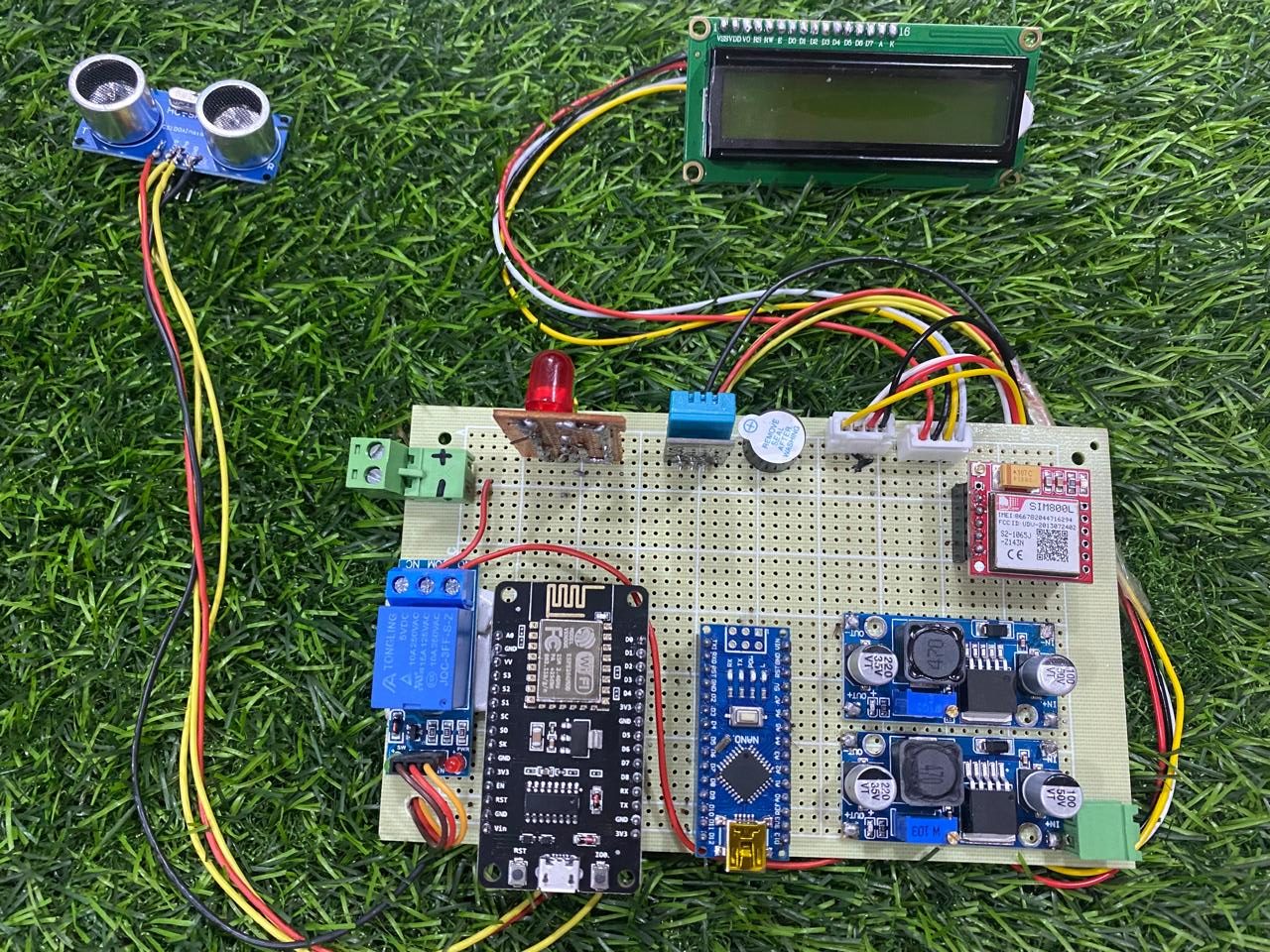Introduction
Floods pose significant risks to life and property, making early warning and real-time monitoring essential for effective management. A flood management system with call and SMS alerts using Arduino Nano, Buck converter, GSM, Relay, humidity sensor, and NodeMCU offers an innovative solution to mitigate flood risks. This blog will guide you through the design and implementation of this system, highlighting its components, functionality, and benefits.
Components Used
Arduino Nano The main microcontroller for processing sensor data and controlling the system.
Buck Converter Regulates voltage to ensure the Arduino and other components receive the correct power supply.
GSM Module Enables sending SMS and making calls for alerts.
Relay Module Controls external devices like sirens or pumps.
Humidity Sensor Measures environmental humidity levels.
NodeMCU Provides Wi-Fi connectivity for remote monitoring.
Power Supply Powers the system.
Jumper Wires and Breadboard For assembling the circuit.
System Operation
Humidity Detection The humidity sensor continuously monitors the environmental humidity levels.
Data Processing The Arduino Nano processes the sensor data to detect flood conditions.
Alert System When the humidity exceeds a certain threshold, the GSM module sends SMS alerts and makes calls to pre-programmed numbers.
Control Relay The relay module activates external devices like sirens or pumps to manage the flood situation.
Remote Monitoring The NodeMCU allows real-time monitoring of humidity levels and system status via Wi-Fi.

Key Features
Real-Time Monitoring Continuously monitors humidity levels to detect potential flooding.
Immediate Alerts Sends SMS and call alerts to notify users of flood conditions instantly.
Automated Control Activates external devices like sirens or pumps to mitigate flood impact.
Remote Access Provides real-time data access and system control via Wi-Fi.
Cost-Effective Utilizes affordable components for an economical solution.
Benefits
Early Warning Immediate alerts enable quick response to mitigate flood damage.
Automated Response Activates necessary flood control measures automatically.
Remote Monitoring Allows users to monitor conditions and system status from anywhere.
Scalable Solution Can be expanded with additional sensors for broader coverage.
Educational Value Provides practical experience in IoT and environmental monitoring.
Step-by-Step Guide
Component Assembly Connect the humidity sensor to the Arduino Nano. Connect the GSM module, relay module, and NodeMCU for communication and control.
Circuit Connection Assemble the circuit on a breadboard, ensuring all components are correctly connected.
Programming the Arduino Write and upload the code to the Arduino Nano to handle sensor data and control the GSM module and relay.
Configuring GSM Module Set up the GSM module with the correct SIM card and phone numbers for alerts.
Setting up NodeMCU Configure the NodeMCU for Wi-Fi connectivity and remote monitoring.
Testing and Calibration Test the system to ensure accurate humidity detection and alert functionality. Calibrate the sensors for optimal performance.
Deployment Install the system in the desired location and start monitoring flood conditions.
Conclusion
Implementing a flood management system with call and SMS alerts using Arduino Nano, Buck converter, GSM, Relay, humidity sensor, and NodeMCU enhances flood preparedness and response. By leveraging IoT technologies, this system provides real-time monitoring, immediate alerts, and automated flood control measures, ensuring better protection for life and property.